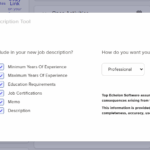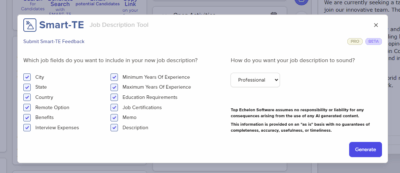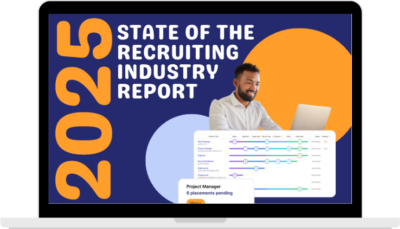(Editor’s note: The information from this article by Top Echelon Recruiting Software has been taken from an Expert Recruiter Coaching Series webinar by Greg Doersching of Next Level Coaching titled, “Building Your Empire: How to Grow Your Business in the Modern Recruiting World” Click HERE to watch the video of that training webinar for free.)
In today’s complex, candidate-short, tech-heavy recruiting environment, success isn’t just about filling job orders. It’s about building a system, a strategy, and most importantly, a team.
According to recruiting industry trainer and speaker Greg Doersching of Next Level Coaching, outlining the precise mindset shift and tactical roadmap necessary to go from solo desk jockey to firm-building empire owner.
“Most of the time, I’m here teaching how to close more deals or get engagement fees. But today, it’s about something different—it’s about growth,” Doersching said.
Let’s unpack Greg’s step-by-step guide for creating a high-performing recruiting business that thrives in the modern era.
Why the Old Model Doesn’t Work Anymore
For years, recruiters believed in a simple, two-sided model: business development on one side, recruiting on the other. But Greg argues this model is outdated and dangerously limiting.
“We’ve always thought of the desk as having two halves—business development and recruiting. But that idea is completely wrong today.”
The explosion of the internet—starting in 1993—reshaped recruiting forever. With it came a new generation of job boards, databases, applicant tracking systems, and social platforms that expanded the size of the candidate pool exponentially.
But all that access created more complexity, not less.
Recruiters are now drowning in data. It’s easier than ever to find people—but exponentially harder to find the right ones.
“The pond got bigger, but we’re catching too many fish—and not the right ones.”
And that brings us to the new model of the recruiting desk.
The Six Sides of the Modern Desk
“A desk today is a six-sided creature,” Greg explained.
To run a desk successfully in today’s world, you need to be great at:
- New Business Development – Winning new clients and job orders
- Account Management – Keeping clients engaged and informed
- Candidate Psychology – Managing fears, motivations, and timing
- Recruiting Execution – Telling compelling stories and making calls
- Research & Sourcing – Finding the right candidates in a sea of data
- Administrative Management – Managing systems, ATS, job posts, etc.
“If you think you can do all six of these things—and do them well—the odds are 2,500 to 1,” Greg said. “That’s how rare it is to find a real 360-degree recruiter.”
So why do so many recruiters still try?
The 360 Myth and the Time Trap
Many recruiters believe they should be doing it all. But as Greg points out, even the highest producers have limits.
“If you’re saying, ‘Part of the reason I’m not as successful as I want to be is because I have to do all six of these things,’ then you already know you need a team.”
Greg offered a telling ratio: it takes two hours of research to equal one hour of phone calls—roughly 15 conversations. That means the tasks that generate revenue (phone time) are often being sacrificed for tasks that support revenue.
“Being on the phone is, without question, the number one thing we must do to be successful.”
So how do you create a system that gets you back on the phone—and growing?
Break Down the Placement Process
Most recruiters think of placements as two-sided: the candidate side and the client side. But Greg laid out a more realistic four-part framework for every placement:
- New Client Development – How did you get the job?
- Client Management – Scheduling, reporting, closing, etc.
- Candidate Management – Packaging, prepping, qualifying
- Research & Recruiting – Building lists, posting jobs, sourcing
Each of these has multiple moving parts and demands different talents.
“Every placement is four parts. And we’re underestimating how much time research actually takes. It’s a rabbit hole. It’s necessary—but distracting.”
Strategic Hiring: What Role to Fill First?
Many recruiters hire the wrong person first. They look for another “mini-me”—another full desk recruiter who can do it all. That rarely works.
Instead, Greg recommends a better approach: figure out what slows you down.
“Is it typing? Is it putting together submittal packets? Job posts? Excel spreadsheets? Then hire for that.”
Option 1: Hire an Administrative Assistant
This person handles formatting resumes, ATS management, posting jobs, prepping documents.
- Hourly role, non-commissioned
- Can be offshore or domestic
- Goal: keep you on the phone
“Hire someone to take the burden off your shoulders and give you time back.”
Option 2: Hire a Project Coordinator
A hybrid role that blends admin with research and sourcing support.
- Ideal if you need help building lists and maintaining data
- Still non-commissioned
- Builds toward becoming a recruiter
“They’re not expected to make 50 calls a day. Their job is to help you stay on the phone.”
Option 3: Hire a Recruiter (But Not a 360 One)
Don’t expect them to qualify candidates like you can. Their job is to:
- Make outbound calls
- Tell your story
- Deliver resumes
“They’re not closers. They’re not you. Don’t rush them or expect them to replace you.”
Give them a path: passive recruiting → active recruiting → qualifying → senior recruiter.
What If Sales Is Your Bottleneck?
If your greatest weakness is business development, Greg recommends hiring a Sales Development Rep (SDR).
The SDR Role:
- 250+ prospecting calls per week
- Set up 3+ new meetings for you weekly
- Manage email sequences, campaigns, and CRM
“An SDR is not a closer. Their job is to tee you up. To get the appointment.”
This is especially important if you’re trying to juggle 50 recruiting calls per day AND prospecting calls.
“We’re losing deals because we’ve diluted the relationship. Emails don’t replace phone calls.”
Create a Pathway for Upward Growth
Every hire you make should have a clear pathway forward. Without it, you create turnover. With it, you build loyalty.
Sample Pathways:
Admin/Coordinator:
- Project Coordinator → Recruiter → Sr. Recruiter → Practice Leader → Partner
Sales:
- SDR → Sales Manager → Account Manager → 360 Recruiter
“We don’t want to create our own competition—we want to build future partners.”
Owner’s Role: Become the Strategic Architect
Even as your team grows, one responsibility stays yours: being the strategic mind behind it all.
“You should always be the master recruiting strategist. No one can tell your firm’s story better than you.”
That means:
- Mapping out feeder companies
- Understanding talent flow in and out of competitors
- Leading search strategy, not just execution
Avoid the keyword trap. Too many recruiters focus on buzzwords and miss the real fit.
“Our clients don’t want someone who checks every keyword. They want someone most likely to succeed in their culture.”
Define Your Process—or Pay for It
If you’re going to scale, you must have a clearly defined process. Every step—from research to handoffs—must be documented.
“If you don’t have a defined process, it’s costing you money. And it makes it impossible to delegate.”
Greg recommends building a process that:
- Defines roles and responsibilities
- Establishes handoff points between team members
- Allows new hires to plug in without confusion
The Most Overlooked Step: The Sales-to-Recruiting Bridge
The biggest pain point in any team structure is the handoff between the sales function and recruiting function.
“We assume the salesperson understood the job. But we waste time when recruiting learns the job is different.”
Greg recommends a role-play handoff:
- Salesperson tells client, “Let me do some homework”
- Recruiter follows up the next day with a job pitch
- Re-confirm details before sourcing
This ensures accuracy, focus, and eliminates wasted time.
Growth Requires Courage
Many recruiters know they need help but hesitate because of cost, time, or control.
“Do not be afraid. That first hire is usually the catalyst that takes you to the next level.”
Whether your goal is to grow to $500K solo or build a $1M+ firm, it starts with:
- Defining your bottleneck
- Hiring strategically
- Structuring your team with upward paths
“There is too much upside to keep thinking all you need is yourself. It’s going to take more.”
Final Word: Growth Is a Team Sport
“The key to growth is always the people. Each of us has individual limits. The only way to beat that is to add more people to your team.”
You don’t need to do it all. You just need to build the system, hire with purpose, and lead with clarity.
That’s how you build your empire.









